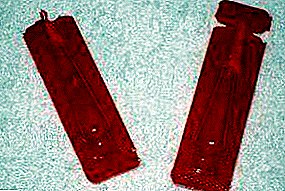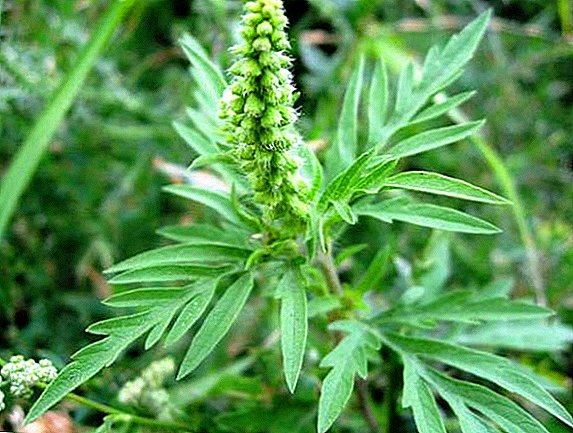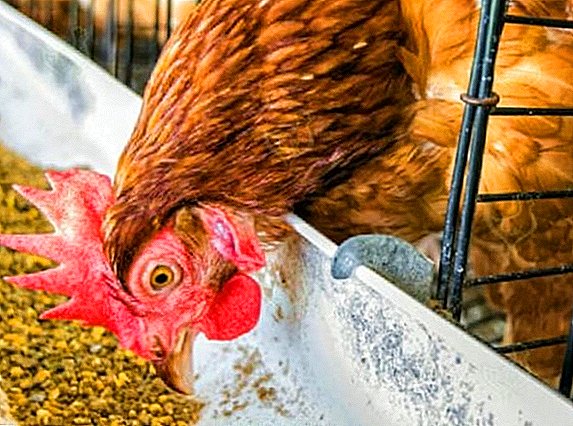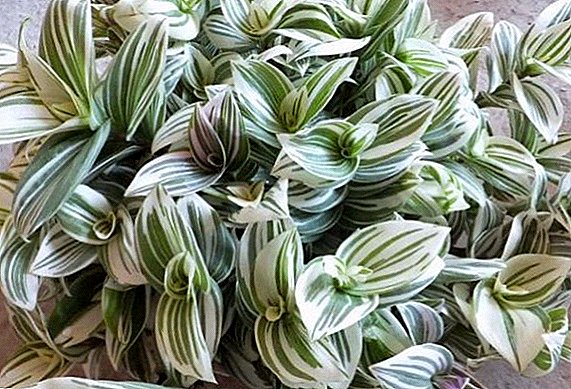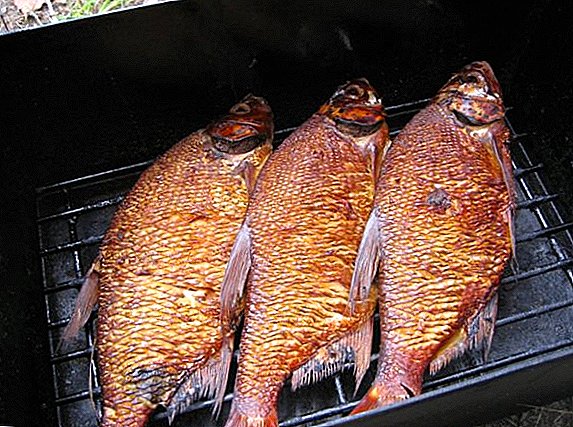
Intending to grow lithops, you should accustom yourself to moderation in caring for these plants.
For active growth they need: poor watering, a lot of light, constant position of the pot, one or more neighbors.
The article describes in more detail the care of Lithops, their maintenance at home and photos.
Care and maintenance
Home care for Lithops - living stones not complicated. He will be able to grow to the maximum size and bloom even a beginner grower.
Provided that the owner of the succulent will try to create a plant resembling natural conditions.
Care for "live stones" at home.
Periods of development
 Cycle of active growth and the period of "hibernation" in domestic Lithops the same as that of plants of this species in the wild.
Cycle of active growth and the period of "hibernation" in domestic Lithops the same as that of plants of this species in the wild.
From July to the end of August in the natural habitat of "living stones" is very dry and hot, so the whole warm season in our region, the plants "slumber", and inside them new pairs of leaves are gradually developing.
Bloom
Lithops bloom falls on September, when the metabolism is activated. They are beginning to please the owners with impressive colors.
In November, the reverse process occurs: the color of the leaves becomes less bright, which serves as a signal for the plant to fall asleep before spring. In late February, plants begin to enter the phase of active growth.
Periods of rest and development may have a different cyclicality, if the florist arranges the wards for periods of artificial drought, in terms other than the dry season in the homeland of the plants.
The flowers are either odorless or exude a light, pleasant scent. The most fragrant look - Lithops thin line (smells like blooming mimosa).
Landing
Transplanting one-year-old seedlings and older plants begin in late February - early March, focusing on the process of changing leaves of plants.
If there is enough space for the distribution of the colony, the plants are blooming, and the juiciness of the color, the density of the leaves is normal, then the pot can be changed for two or three years.
Emergency transfer because of the long-term wetting of the soil, do the following:
- gently remove the plant,
- a little dry his root system in the air,
- put in a suitable composition of dry soil,
- during the week watering Lithops do not spend, just spraying,
- the plant is held not in partial shade or shade, but in the sunniest place.
 Each seedling is placed in the landing hole so that the neck was covered with soil.
Each seedling is placed in the landing hole so that the neck was covered with soil.
Overdoing with the immersion of plants in the ground will not work, because they will not give leaves.
Changing plants to the pot with the soil, they are planted in pairs or groups, placing in one container instances of the same age. Between the individual "stones" leave a little open ground, equal in area to half the diameter of the succulents seated.
For young seedlings, the same soil composition is suitable as for adult plants..
Replanting an old plant with large roots, they are slightly shortened.
At the bottom of the pot necessarily poured a layer of drainage, using for this purpose crushed brick, expanded clay crumb with large fractions.
In one pot, you can grow different types of Lithops, since they all require identical care. Moreover, plants grow better in the presence of relatives, even if they have a different color and belong to a different type.
Watering
From late summer to November each watering is carried out after the final drying as the surface of the soil and its lower layers. The intensity of irrigation of the soil should be slightly higher and more often when you notice that the plant changes the foliage.
 However, increasing the amount of water emitted by one pot is not worth it: because of the accumulation of excess moisture, the leaves will crack and the bush will die.
However, increasing the amount of water emitted by one pot is not worth it: because of the accumulation of excess moisture, the leaves will crack and the bush will die.
Soil irrigation perform every two weeks in the hot season. Approximate volume of water per adult specimen: 2 hours spoon on the ground.
On particularly hot days, spraying will help replenish the moisture in the plants and not pour them. The procedure is performed in the morning, before the plants start to get direct sunlight or after a decrease in the intensity of illumination (to avoid sunburn).
In nature, the Lithops themselves "burrow" into the ground during the arrival of the dry season, so if the plants "sit down", it means that they have a period of rest. At this time (January-March) watering is stopped.
If suddenly a much larger amount of water got into the pot, it was absorbed into the soil, and did not leak through the drainage hole, then it is better to be safe and transplant the "pebble".
It is possible in the same pot, after replacing the soil in it. Before planting, a plant with bare stones should be held in the shade for about an hour in the air so that excess moisture can evaporate from the surface of the lower part of the lithope.
Lighting
Everything Lithops love sunny and hot places. In the wild, the soil around them can warm up to a temperature of 500 ° C and higher, so a window overlooking the south side, where the temperature of the atmosphere in summer reaches the limits that are detrimental to habitual room vegetation, is the most preferable option.
Placing a pot on the windowsill on the north side, The plant needs additional illumination.. Otherwise, the bushes will gradually be drawn out and partially become less decorative.
The location of the container with growing specimens should not be changed without special need.
The soil
 When preparing the soil, you must take into account the following mandatory conditions:
When preparing the soil, you must take into account the following mandatory conditions:
Soil should be quite poor. Consist of crushed red brick, river sand with large and small grains of sand. Clay and soddy humus are used as an obligatory additive (the best option is soil from rotted birch leaves).
The ratio of 1: 1: 1: 0.5: 0.5. Pebbles, small pieces of granite and other stones are poured onto the top layer of soil.
There should be no limestone in the soil.
Temperature conditions
In the summer, you can take the plants to the air, ensuring the ingress of large amounts of daylight. In winter, when the flowerpots are lined up on the windowsill, where at night the temperature drops to 10-12 ° C, watering should be stopped.
Air humidity
Like other succulents Lithops calmly tolerate dry air in city apartments.
Pot selection
Plants form long roots, so to create a comfortable environment, you should give preference to the pot of medium depth.
Top dressing
Fertilize no more than once every two years. (subject to the cultivation of copies in the same pot for two years). The saplings transplanted last year do not need top dressing.
Lifespan
Buds open at noon. Life span of a single blooming flower: 5-10 days.
Changed foliage, withered peduncle can be removed after complete extinction and turning into a dry, crumbling substance under the fingers.
Breeding
 Lithops breed by either layering or seed.
Lithops breed by either layering or seed.
It is more difficult to propagate this species of plantsthan seeds, because the "kids" on the bushes are rare.
Stable replenishment of the family with the layering gives only a beautiful type of succulent, so other species easier and faster to breed lithops from seeds.
Lithops seeds at home, placed on the surface of moist soil, after which the "nursery" is covered with a cap or lid.
How to grow "Live stones" (lithops) of seeds at home? Twice a day, the ground is ventilated with seeds for ten minutes, around the pot the temperature is maintained at 28-300 С in the daytime and 15-180С - in the dark.
After the seeds have been pricked (for 6-7 days), the duration and frequency of the air “baths” are doubled by raising the cap.
Providing seedlings with moisture is performed by spraying.
From 30 days from the moment of emergence, seedlings can be placed in the open sun. Cap-capped plants cannot be kept at + 40 ° C.
The optimal time for the first seedling picks: the first phase of active growth of plants of this species (end of February, March). Planting tiny lithops in the ground, monitor the direction of the ends of the root system. Each branch must be positioned so that it "looked" down.
Feed young plants can not be poured.
A photo
Lithops - "living stones":


Lithops seeds:

Diseases and pests
The most common problems are due to:
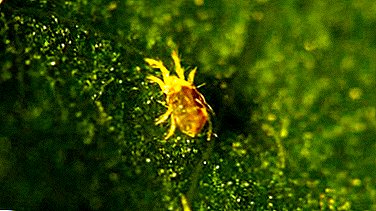 Spider mite - attacks the plants contained on poorly blown but well heated window sills, where rarely do wet cleaning of accumulated dust.
Spider mite - attacks the plants contained on poorly blown but well heated window sills, where rarely do wet cleaning of accumulated dust.- Rootworms, which often attack plants with an extended period of "sleep", so it is better to carry out prophylaxis in advance, using Dantop, Mospilan, etc.
Lithops are ill, mainly because of overflows that provoke the development of rot.
Lithops do not get sick and are not affected by pests., if they are not flooded and they are placed in a zone with a comfortable temperature, a sufficient amount of light.
These three conditions are enough to count on the imminent flowering of "live stones".


 Spider mite - attacks the plants contained on poorly blown but well heated window sills, where rarely do wet cleaning of accumulated dust.
Spider mite - attacks the plants contained on poorly blown but well heated window sills, where rarely do wet cleaning of accumulated dust.
